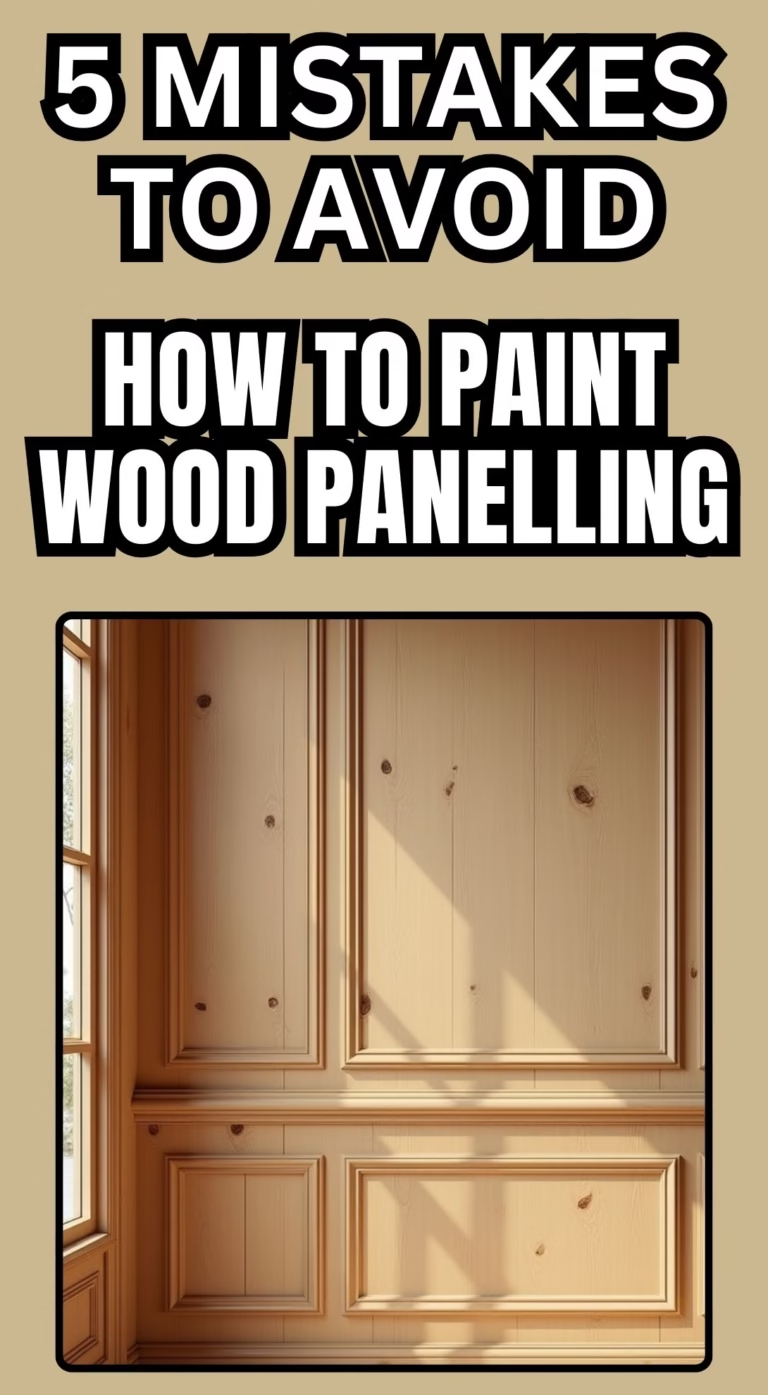Wood panelling can add warmth and character to a space, but if it’s outdated or worn, a fresh coat of paint can work wonders. While painting wood panelling may seem straightforward, it’s not as simple as slapping on some latex paint. Many DIYers rush the process and end up with peeling paint, uneven finishes, or visible wood grain that they meant to hide.
Whether you’re updating a dated den or brightening a paneled hallway, avoiding common mistakes is crucial for a professional-looking result. Here’s your step-by-step guide — and five critical mistakes to avoid when painting wood panelling.
Why Paint Wood Panelling?
Painting wood panelling can:
- Brighten dark, dated interiors
- Match modern design aesthetics
- Increase home value
- Make rooms feel more spacious and clean
However, wood panelling comes with unique challenges, like deep grooves and glossy finishes that resist paint. Preparation is everything.
Step-by-Step Instructions to Paint Wood Panelling Properly
Before jumping into the common mistakes, here’s a quick overview of how to correctly paint wood panelling:
- Clean the Surface Thoroughly
Use a degreaser or mild detergent to remove dirt, oils, and old polish. Rinse and let dry completely. - Lightly Sand the Surface
Sand with 120–150 grit sandpaper to dull the gloss and allow primer to adhere. Focus on both the flat surfaces and grooves. - Fill Grooves (Optional)
If you want a smooth wall-like appearance, fill panel grooves with wood filler. Let it dry and sand smooth. - Prime with a Stain-Blocking Primer
Use a high-quality bonding primer designed for glossy or wood surfaces. This prevents tannin bleed and improves paint adhesion. - Apply Paint in Thin, Even Coats
Use latex or acrylic paint in a satin or semi-gloss finish for durability. Apply two coats, allowing full dry time between layers.
5 Mistakes to Avoid When Painting Wood Panelling
1. Skipping the Cleaning Stage
Why it’s a mistake:
Wood panelling, especially older installations, tends to collect years of grime, oils, and residue from furniture polish or smoke. Painting over this without cleaning leads to peeling paint and poor adhesion.
How to avoid it:
Use a TSP (trisodium phosphate) substitute or degreasing cleaner. Wipe down all surfaces and rinse with clean water. Allow to dry thoroughly.
2. Not Sanding or Sanding Incorrectly
Why it’s a mistake:
Glossy finishes on wood panelling repel paint. Skipping sanding or using too fine a grit leaves the surface too smooth, causing paint and primer to slide right off.
How to avoid it:
Use medium-grit sandpaper (120–150 grit) to scuff up the surface. You don’t need to remove the finish completely—just dull the sheen so the primer can grip.
3. Using the Wrong Primer or No Primer at All
Why it’s a mistake:
Wood, especially darker types like pine or cedar, can bleed tannins through paint. Additionally, glossy surfaces resist water-based paints unless properly primed.
How to avoid it:
Use a stain-blocking bonding primer. Oil-based or shellac-based primers are ideal for difficult surfaces and tannin-heavy woods. Allow the primer to cure as directed before painting.
4. Overloading the Paint or Ignoring Dry Time
Why it’s a mistake:
Applying thick coats in an attempt to save time results in drips, streaks, and uneven drying. It can also cause the paint to peel or crack later.
How to avoid it:
Use thin, even coats and let each one dry completely (check the can’s recommended dry time). Two coats are often necessary for full coverage.
5. Forgetting to Caulk and Fill Gaps
Why it’s a mistake:
Wood panels often have seams, nail holes, and grooves that can make the final look appear unfinished or cheap.
How to avoid it:
Caulk seams and fill nail holes with spackling compound or wood filler. For a smooth drywall-like finish, fill the panel grooves too. Sand everything flush after it dries.
Optional: Should You Fill in the Grooves?
Many homeowners debate whether to leave the panel grooves or fill them in. Here’s a quick guide:
- Leave grooves if: You want a rustic, cottage, or traditional look.
- Fill grooves if: You want a sleek, modern appearance similar to drywall.
Filling grooves is more work but offers a seamless wall finish that appeals to many buyers and modern decorators.
Best Paint Types for Wood Panelling
- Finish: Satin or semi-gloss is ideal for durability and easy cleaning.
- Type: Latex or acrylic latex paint is recommended, unless using oil-based primers or paints for specific needs.
Stick with high-quality brands that provide good coverage and durability.
Final Tips
- Remove or mask trim and outlets before painting.
- Use a high-quality angled brush for grooves and a roller for flat areas.
- Don’t rush—each step builds on the last.
Conclusion
Painting wood panelling is a fantastic way to modernize a room and brighten your space—but only if done correctly. By avoiding the five major mistakes above and following a thorough preparation and painting process, you’ll achieve a long-lasting and attractive finish that completely transforms your interior.
Whether you’re freshening up your cabin walls or updating a 1970s rec room, the key is prep, patience, and the right materials.



